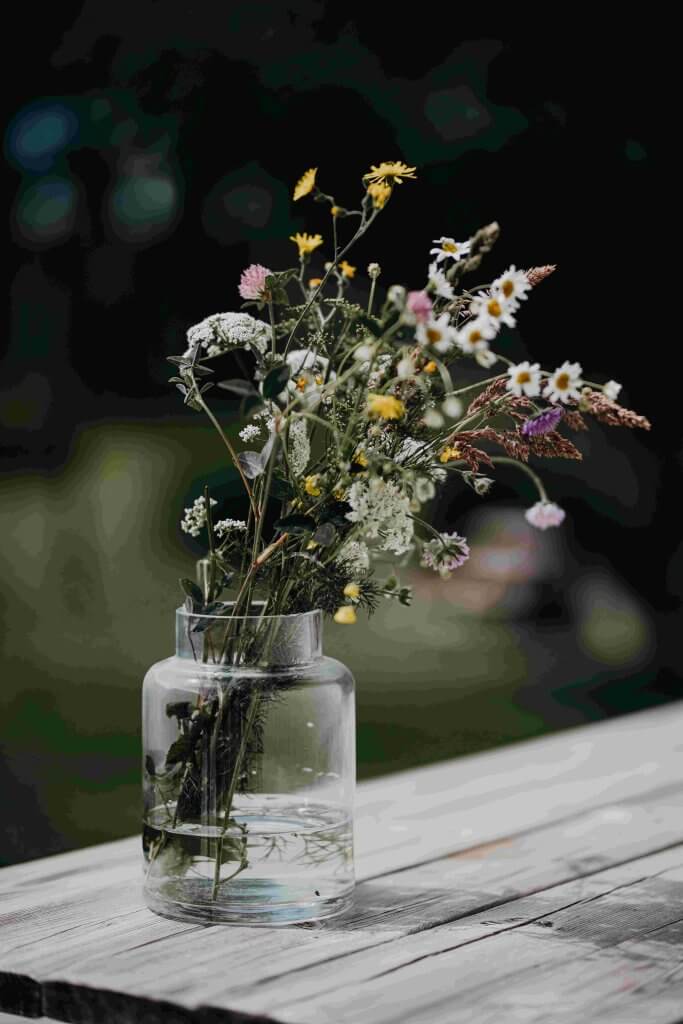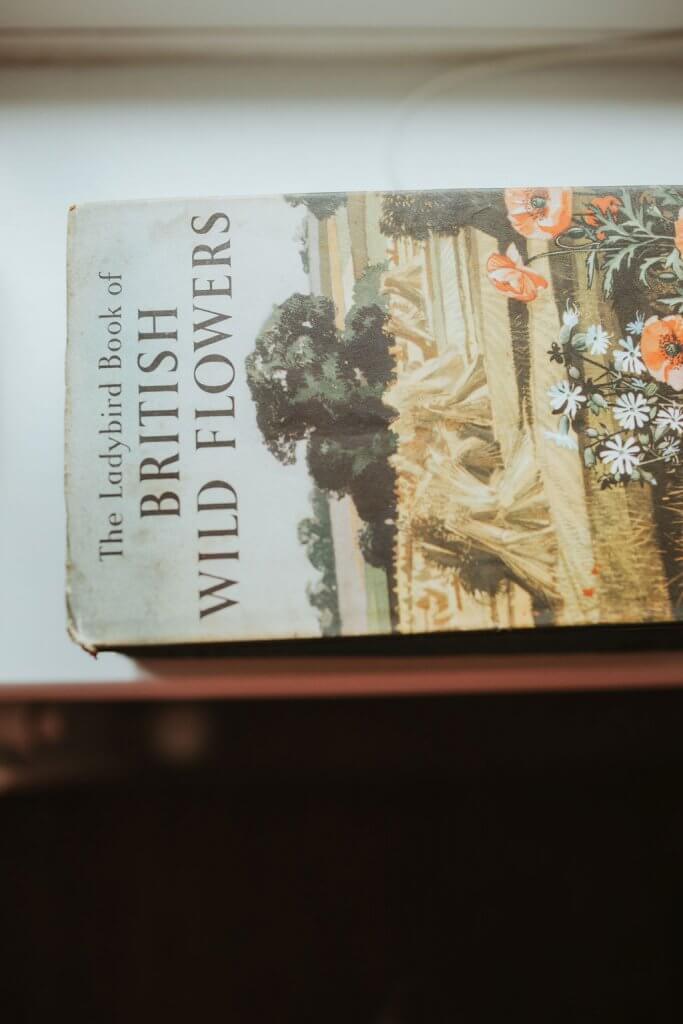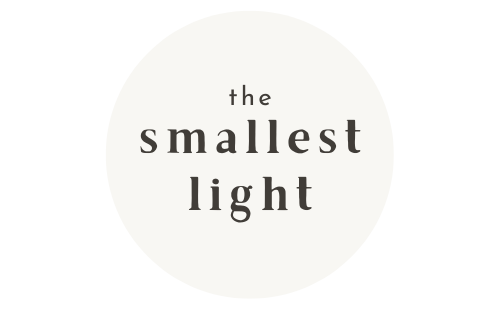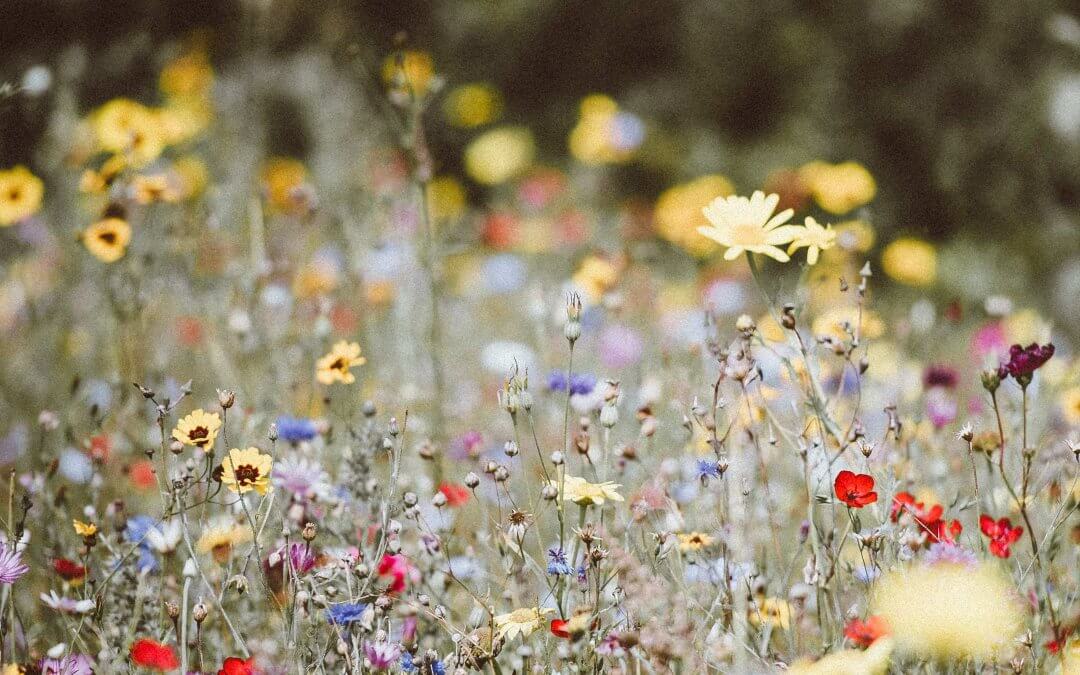“I’m going to give you a handful of wildflowers so, each petal that falls will remind you that the earth breathes, and the moon rises.”
Carolyn Riker
The stories, legends, and beliefs around our British wildflowers are bursting with natural magic and mystery. The many tales that have been passed down for generations shape and guide our relationship with these ethereal plant friends. When we dig a little deeper into this rich tapestry of folklore, we can see that these stories often have their roots bound in traditional medicine, religion, and mythology.
The Tales of Wildflowers
Let’s begin with the oh so common Dandelion. Also known as blowball, doon-head-clock, cankerworm, milk witch, witch’s gowan, yellow gowan, Irish daisy, priests’-crown, puff-ball, priest’s crown, white endive, swine’s snout, wild endive, face clock, wet-a-bed, pee-a-bed, and piss-a-bed.
Dandelions have a long and rich history of folklore. In many cultures, they are seen as symbols of hope, wishes, and new beginnings. In Europe, the nickname “pissabed” stuck because it was believed that if you ate too many of the flowers, you would wet the bed. A suspicion based in fact, as dandelions are a diuretic and they remain a popular natural remedy for conditions such as water retention, edema, and kidney stones.
In Celtic folklore, dandelions were seen as a potent symbol of the sun. They were often used in rituals around midsummer to celebrate the summer solstice. In Native American cultures, dandelions were seen as a symbol of purity and innocence and used in ceremonies to cleanse the body and spirit.
Today, dandelions are still seen as a symbol of hope and wishes. After the yellow flower blooms, the petals dry out and fall off. The bracts fold backward, the puffy white ball opens up and that’s when you can take a deep breath, blow and make your wish…
Dandelion folklore is a fascinating glimpse into the way that people have interacted with these common blooms for centuries. The different meanings that have been attributed to dandelions reflect the different cultures and beliefs of the people who have encountered them.
I also found plenty of stories grown around our summer hedgerow heroine, the common cowslip. One story tells of a fairy who was tricked into drinking a potion made from cowslip flowers, and who then fell in love with a human. Did you know that if you pick a cowslip flower on May Day, you may well be granted a wish or if you see a cowslip flower growing on a grave, it is a sign that the person who is buried there was indeed a fairy.
Wildflower folklore is a rich and fascinating tradition that has been passed down for centuries. These stories help us to understand the cultural significance of wildflowers, and how they have been used and known by people throughout history. The stories and legends about wildflowers often connect us with these plants in a much deeper way than just learning about their physical appearance and medicinal properties.

The Old Names of Wildflowers
The names of UK native wildflowers are a window into our country’s rich folklore and culture. From cowslip and selfheal to ragged robin and devil’s-bit scabious, these plants have been associated with myths, legends, and traditions for centuries.
The name “witches thimble” for foxglove is thought to have originated from the plant’s long, bell-shaped flowers, which resemble the thimbles worn by witches. The plant has also been associated with witchcraft and sorcery for centuries. In some cultures, it was believed that foxglove could be used to brew potions that would give the drinker magical powers. Others believed that the plant was poisonous and could be used to poison enemies.
The wild, blue cornflower is also known by many names, including bachelor’s button, bluet, bluebottle, boutonniere flower, centaury, cyani flower, devil’s flower, and hurt-sickle. The name bachelor’s button was given to the cornflower because its blue petals resemble the buttons worn on men’s clothes in the 16th century. The names hurt-sickle and blunt-sickle were used in England because the hard stems of the flower would blunt the reaper’s sickle when cutting grain.
Latin names for plants have long been seen as more objective and scientific than the vernacular names that were used in the past. This is because Latin names are based on the plant’s physical characteristics, rather than its folklore or cultural significance. As a result, Latin names have been seen as more “neutral” and “fit for study.”
However, there is also a sense in which Latin names have distanced us from the natural world. By stripping away the personal and cultural associations of vernacular names, Latin names have made plants seem more like objects than living beings. This difference can make it much more difficult to connect with plants on a deeper level.
Vernacular names, on the other hand, often reflect the way that people have interacted with plants for centuries. These names can be personal, whimsical, and very often, humorous. They can also be associated with folklore or mythology. As a result, vernacular names can help us get to know plants on more emotional terms.
Ultimately, the choice of whether to use Latin or vernacular names for plants is for each of us to make. There is no right or wrong answer. But it’s useful to be aware of the different ways that these two naming systems can affect our bond with the natural world.

The Relationship Between Wildflowers and Humans
The stories and legends that have been told about wildflowers have shaped our relationship with these flowers in so many ways. They have given us a sense of wonder, mystery and awe as well as a practical, traditional knowledge bank built up over centuries.
Folklore and common names teach us much about the medicinal properties of wildflowers. Many of the stories and legends about wildflowers have their roots in traditional medicine. These stories teach us about the medicinal properties of these plants and how they can be used to treat a variety of ailments.
Through myth and folklore we can get to know and love these plants as the multifaceted miracles they truly are. The stories and legends about wildflowers help us to feel a sense of connection and build a relationship which runs deeper than surface-level, scientific fact.
Native wildflowers are especially important to get to know and preserve because they have adapted to our climate and environment over hundreds or even thousands of years. This means that they are well-suited to our soils, rainfall, and temperature ranges. As a result, they are more likely to thrive in our gardens and wild spaces than non-native plants.
If you’re looking for a way to connect with nature and learn more about British folklore, consider planting some native wildflowers in your garden or in window boxes. You’ll be helping to support the local ecosystem and enjoying the beauty of these magical plants for years to come.


I love the vernacular names and agree they connect you much more to a plant and the land lore associated with it.
The country names vary regionally and this can cause problems when you work with plants. I have to use the latin names in my designs to ensure clients get the correct plant in their planting schemes.
But I have a major soft spot for those often poetic, meaningful and sometimes frankly terrifying vernacular names!